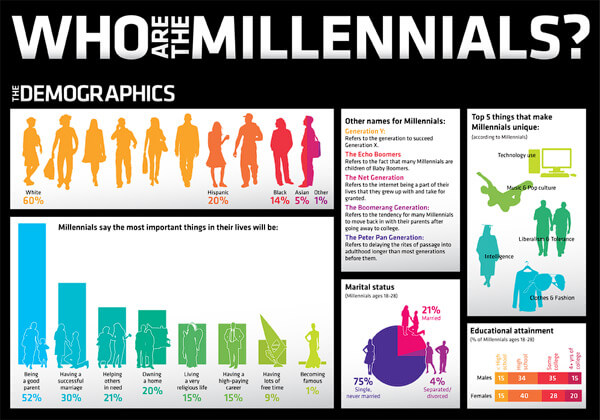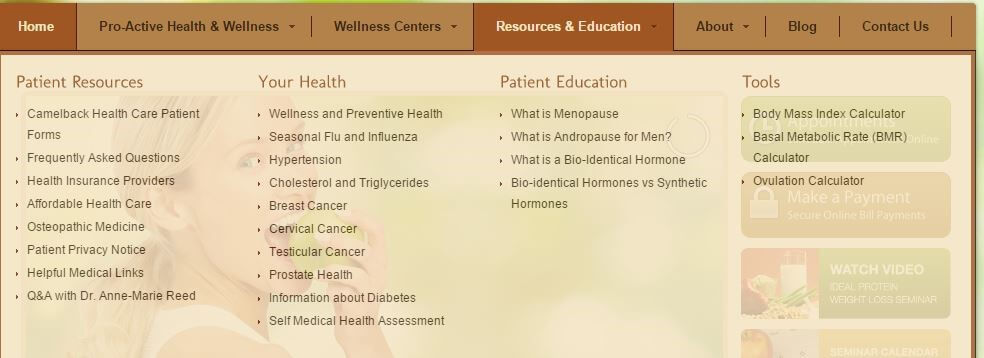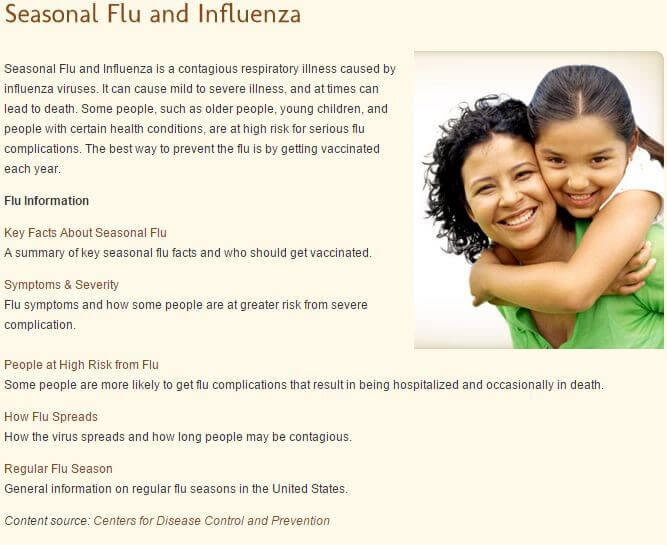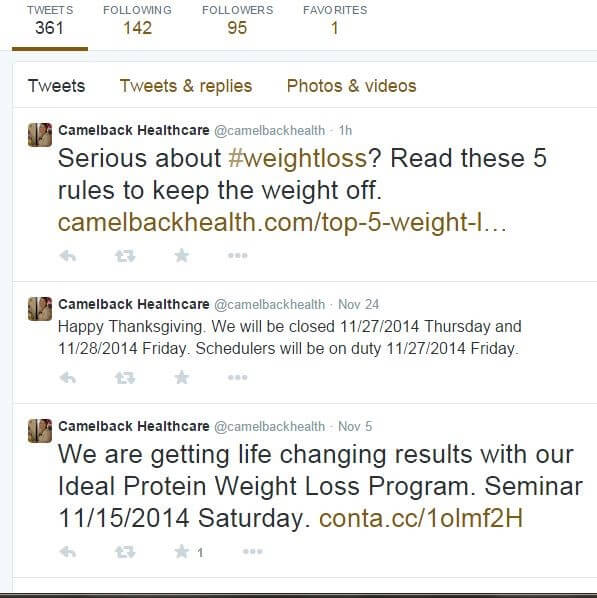It’s no surprise that the digital landscape has forever altered how people interact with their day-to-day health, especially when it comes to diagnosing an illness or seeking general treatment advice. For baby boomers, swinging by the physician’s office when feeling ill was the norm, but millennials turn to the Internet for health advice long before contacting a doctor.
As of September 2012, 77 percent of people are using a search engine as the forefront tool for medical advice, and more than 40 percent of consumers act on the health advice found via social media. Millennials are twice as likely as other generations to act on health advice they find through social media or the Internet. After all, Google “flu symptoms” and you’re staring at 73.7 million results in less than half a second. Why pay a doctor to tell you what you can find with a mouse click?
The answer is, despite how thorough you’re being by reading through five different medical databases detailing symptoms and treatment methods, treatment advice on the Internet can be wrong. Perhaps you mistook one symptom as another; maybe two illnesses share common warning signs, or possibly the chosen tools offer terrible guidance for your body type. By harnessing social media influence through equitable content creation, small medical practices and their associates can cut through misleading information and encourage always-connected millennials, who are prone to self-diagnosis, make better health decisions—all while establishing the businesses as part of that process.
Social Media and Content Creation
Healthcare brands are in a tremendous spot right now regarding their future on social media because the posts users see on Facebook and Twitter are shifting nearly entirely toward organic well-written and useful content. Simply put, social media users will more frequently see custom-created content that engages and educates them, instead of click-bait headlines and paid ads. Effective social content is not promotional, it’s useful.
Need more help reaching Millennials? We recently wrote an article titled, Millennials and Healthcare: 3 Tips to Reach Young, Stubborn Patients that will assist you with generating more referrals.
This shift is why medical practices have an opportunity waiting to be seized, especially when it comes to engaging millennials, who often spend up to 18 hours per day consuming some form of media. Out of 73.7 million search results, some of the advice is guaranteed to be balderdash, and that’s where medical practices can break through.
For example, if a medical practice has an established blog and wants to target recent college graduates, they’d write an article discussing the different types of medical insurance plans for 20-somethings, a piece on the stresses of entering the workforce or why medical insurance—regardless of age—can be a financial lifesaver. If the business is just starting its SEO strategy, it could focus on a daily series covering unique ideas, such as a daily blog where each day is dedicated to discussing the ins-and-outs of a bone in the human body, and market it as a study resource for biomedical college students.
Millennials are notoriously finicky when it comes to brand loyalty, and online content is no different. If you can create a great product or piece of content and get it in front of a millennial consumer, then they’ll take care of marketing it organically for you through shares on their favorite social media sites. Assuming proper anchor texts and SEO friendly word choice is used, the piece should serve as the building blocks to better social media presence and improved search results, which in turn improves brand recognition. But if the content or product is low quality, then your brand is dismissed and likely won’t be looked at again.
Build a Distribution Network
The adage, ‘if you build it they will come’ sadly doesn’t apply to content marketing. Many people who are not adept at SEO marketing are under the misconception that all they need to do is create good content and then flocks of viewers and social media shares will suddenly pour in, raising brand awareness and social presence. But the reality is much harder.
Shakespeare himself could write a masterpiece article, but if it gets placed on a no-name blog then practically nobody will read it, and the social leverage goes nowhere. Conversely, a terrible story can get placed on Buzzfeed and gets hundreds of shares and thousands of views. The content quality matters, but so does where the content calls home.
If medical practices want their content to get featured on major distribution channels, such as the first few search engine pages, social media networks, or news sites, the content must be fed into these channels through trusted conduits, Search Engine Watch recommends. Search engines rely on trusted websites, which include quality content, proper SEO markup and backlinks. Social media network conduits focus on what power users are sharing. As for coveted news sites, most of the content published there are recommended through reporters, bloggers and editors.
The idiom, ‘it’s who you know’ is incredibly true when it comes to establishing a content distribution network. In order to succeed in getting your content in front of readers, then you’re going to need to know the people behind those trusted conduits and provide them with valuable information—whether that’s news and research or a useful infographic.
Connecting with these people directly and trying to build a professional relationship is the first step. Afterward, Search Engine Watch recommends that once they know your name continue to feed them useful information, but instead of giving them that information for them to publish, add additional content to your website and point them there as an extra resource to link to.
If you can accomplish this you’ll successfully be connected to these outlets’ main distribution systems through whatever intermediaries you reached out to. “As they distribute your content through their networks they’ll leave traces back to you, the source, in the form of links, likes, and shares,” Search Engine Watch states. All of these attributes increase the likelihood of your content appearing organically in front of a reader; if the reader believes it is worthwhile content they’ll share it and the cycle repeats. Over time, your website itself turns into a trusted distribution center and the process of obtaining brand mentions and coverage becomes easier.
Peering Through the Looking Glass
It is one thing to read about what type of content can increase social media presence, but it’s another entirely to see it. Let’s take a look at a small medical practice, and analyze how it’s using content wisely and where it can improve. Finding a local small medical practice that had good content for millennials proved to be a bit too difficult, so this website is among first local options for “general health physicians in Phoenix,” which is similar to common search parameters consumers use when looking for a new doctor.
Camelback Healthcare, a small family wellness clinic in Phoenix, is doing a great job with their website content. The company is on the first page of Google results, and for good reason. The website layout is attractive, easy to navigate and rich with content. However, the company’s Facebook page and Twitter profile are in dismal shape.
The website has a good resource page with articles and information the business’s customers would likely search for. Clicking on any of those resources take you to an internal reference page where you can delve deeper into the subject. This string of internal page links and referencing, coupled alongside the quality of the articles is precisely the type of content a medical practice should have permanently displayed on its website. The genre of content present will be dictated by the target audience.
Additionally, the website has a blog dedicated to more abstract, shareable articles dealing with specific health topics, but each subject and story relates back to services offered by Camelback Healthcare. These articles are the type of content you’d try to get linked on other quality websites to increase your domain reputation in the eyes of search engines.
Conversely, Camelback’s social media is a dud.
The company’s Twitter page is doing a good job at Tweeting content directly related to the site, which might lead back to page views, but that’s not the best way to approach this task—especially when the tweets only happen a few times per month.
At the most basic level, the key to gaining a social media following is by being interesting. Keep up with trending subjects, use proper hashtags, and Tweet quality and relatable content. It doesn’t necessarily matter if the content is directly related to your brand or area of expertise. So long as the subject is tangentially related, you’ll improve the likelihood of having a lively social following.
In this scenario, the Camelback Healthcare is doing a great job making its website attractive to search engines, but isn’t capitalizing on transitioning that content onto social media platforms. Because of this, the group is limiting their potential to reach new customers without spending advertising money.
Tracking Success and Failure
Content creation and distribution isn’t an exact science and dozens of completely viable methods exist. But one thing is certain, you need to know how successful your methods are working, and that comes down to a few common factors: page impressions, content shares and keyword search ranking. Ultimately, the goals depend on the business.
If after launching a millennial-centric blog you eventually start seeing more millennial customers popping up then what you’re doing is working. If your domain and page authority are scoring higher, then keep up the practices. If you’re partaking in these processes and nothing is happening, install a MOZ toolbar and use services like AHREFS to track where your links and content is going. Find the weaknesses, and eliminate them. Afterward, repeat the creation process and try again.
Most importantly, don’t be afraid to try new things. If some form of change is what you desire, then figure out a process that works. The chance of failure is always there, but so are the opportunities that awaken after finding success.
Guest Author: Travis McKnight
Images courtesy of: COMMONSEOQUESTIONS.COM, https://bravogroupvoice.wordpress.com, www.businessesgrow.com

















